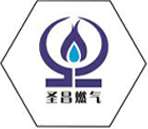
Oct . 02, 2024 16:15
Back to list
Efficient Solutions for Gas Purification and Contaminant Removal Systems
Understanding Gas Purifiers Enhancing Air Quality and Safety
In the modern world, where industrial activities and urbanization continue to rise, the need for effective air purification systems has become increasingly critical. Gas purifiers play a pivotal role in ensuring that both industrial facilities and residential areas experience cleaner, safer air. This article delves into the significance of gas purifiers, their functionality, types, and applications, ultimately underscoring their role in enhancing air quality and safeguarding human health.
Gas purifiers are specialized devices designed to remove impurities from gases, ensuring that emitted air is free from harmful contaminants. These contaminants can include volatile organic compounds (VOCs), particulate matter, and various toxic gases, which may be produced through industrial processes or emitted from household items such as paints and cleaners. The operation of gas purifiers typically involves several stages of filtration and adsorption, tailored to capture specific types of pollutants.
One of the most common types of gas purifiers is the activated carbon filter. Activated carbon has an incredible ability to adsorb molecules due to its vast surface area and porous structure. When gases pass through the activated carbon, contaminants adhere to its surface, effectively removing them from the air. This type of purifier is particularly effective for VOCs and odors, making it a popular choice for residential use, such as in air purifiers for homes or in HVAC systems.
Another significant category of gas purifiers is the catalytic converter, which is widely used in automotive applications
. These devices facilitate chemical reactions that convert harmful gases such as carbon monoxide (CO), nitrogen oxides (NOx), and unburnt hydrocarbons into less harmful substances like carbon dioxide (CO2) and nitrogen (N2). Catalytic converters are essential for reducing vehicular emissions, thereby improving air quality in urban areas plagued by traffic pollution.gas purifier

In industrial settings, gas purifiers such as scrubbers play a crucial role in controlling emissions. Scrubbers use a liquid solution to capture and neutralize harmful gases before they are released into the atmosphere. For instance, flue gas desulfurization (FGD) systems are employed to remove sulfur dioxide (SO2) from emissions produced by power plants. By implementing such technologies, industries can comply with environmental regulations and contribute to cleaner air initiatives.
The benefits of gas purifiers extend beyond environmental concerns; they significantly impact public health. Poor air quality has been linked to various health issues, including respiratory diseases, cardiovascular conditions, and even neurological disorders. By reducing the concentration of hazardous substances in the air, gas purifiers can help prevent these health risks and improve the overall quality of life for communities.
Moreover, advancements in technology have led to the development of more efficient gas purification systems. Innovative approaches, such as photocatalytic degradation and biofiltration, are being explored to enhance the effectiveness of gas purifiers. These technologies not only target a broader spectrum of pollutants but also aim to create systems that are sustainable and energy-efficient.
In conclusion, gas purifiers are indispensable tools in the quest for cleaner air and healthier environments. Their ability to remove harmful contaminants from the air makes them vital in both industrial operations and residential settings. As technology continues to advance, the efficiency and effectiveness of gas purification systems will likely improve, offering even greater solutions for air quality management. Embracing these technologies is essential for protecting our health and preserving the environment for future generations. The importance of gas purifiers cannot be overstated, as they play a crucial role in creating a safer, more sustainable world.
Next:
Latest news
-
Safety Valve Spring-Loaded Design Overpressure ProtectionNewsJul.25,2025
-
Precision Voltage Regulator AC5 Accuracy Grade PerformanceNewsJul.25,2025
-
Natural Gas Pressure Regulating Skid Industrial Pipeline ApplicationsNewsJul.25,2025
-
Natural Gas Filter Stainless Steel Mesh Element DesignNewsJul.25,2025
-
Gas Pressure Regulator Valve Direct-Acting Spring-Loaded DesignNewsJul.25,2025
-
Decompression Equipment Multi-Stage Heat Exchange System DesignNewsJul.25,2025

